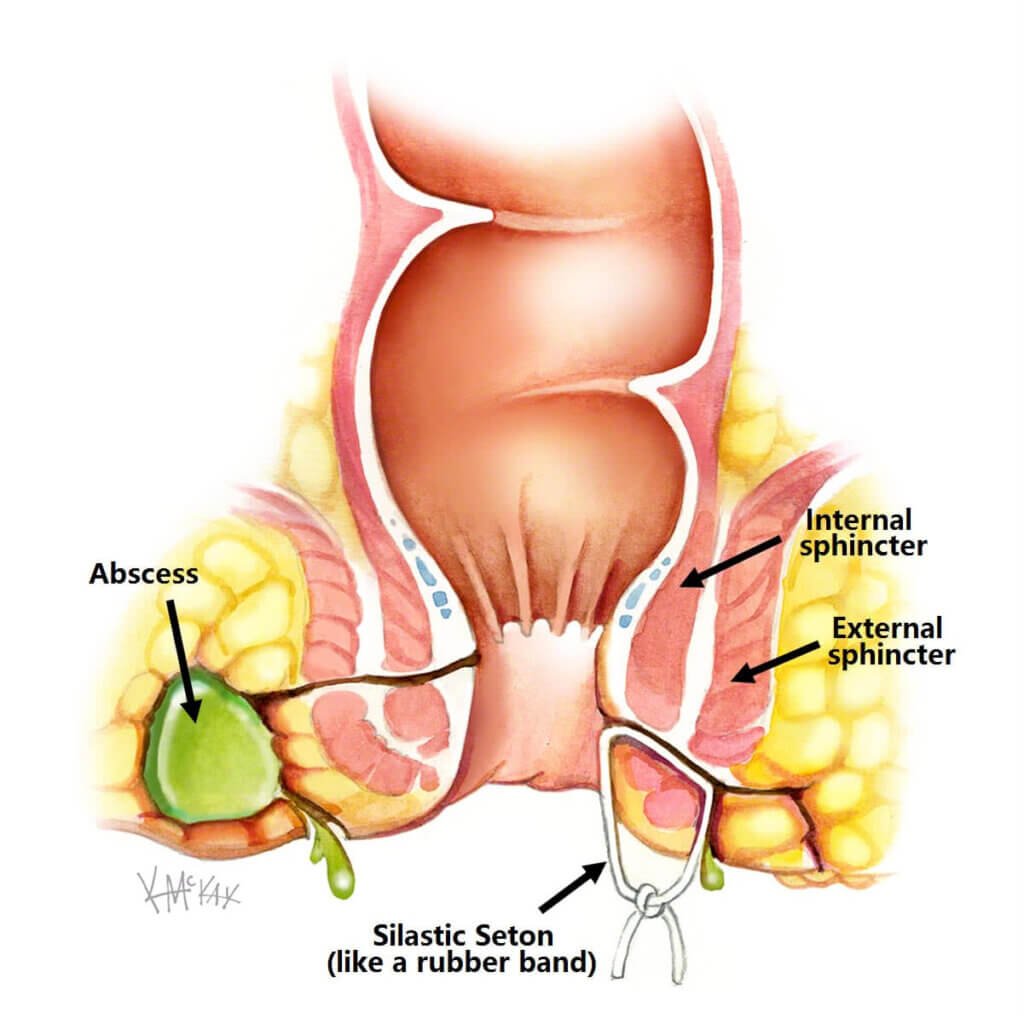Anal Fistula
An anal fistula begins as an anal abscess that subsequently bursts, leaving a communicating tract between the inner anus and the skin of the perianal region. It causes a chronic discharge of pus that typically has an offensive odour.
Different types of fistulas
Perianal fistula – can be short and superficial not involving the anal sphincter (submucosal fistula) or can be long and deep, involving just the internal anal sphincter (intersphincteric fistula) or both anal sphincters (transphincteric fistula or extrasphincteric). Most fistulae are low arising from within the anal canal.
Simple fistulae – are those with a single tract that involves less than 30-50% of the external anal sphincter. The preferred treatment of a simple fistula is to perform a small operation under general anaesthetic where a probe is placed in the fistula and the overlying skin is cut to allow the tract to heal as a shallow ulcer.
Complex fistulae – are those with multiple tracts involving more than 30-50% of the external sphincter. They involve the anterior half of the anus (in women), any fistula as a result of radiation or Crohn’s disease and those arising in someone with already compromised sphincter function (i.e. weak anal tone prone to incontinence). These cannot simply be laid open, and often the first step is to control the sepsis by inserting a seton.

If the internal opening of the fistula tract is high, it may involve too much of the internal sphincter to cut open, and it is not safe to incise, as loss of this vital muscle will result in incontinence. Therefore, at this point there are 4 options that Mr Stylianides has:
- Remove the seton
- Tighten the seton (repeated every 6 – 12 weeks)
- Remove the seton and use glue or a plug to seal the tract
- Leave the seton in place for 6 months to allow “maturing” of the fistula tract prior to planned surgical repair.
In many simple cases, the condition should be much improved within six weeks and you will need to be re-examined to determine if the internal opening of the fistula is low and safe to operate on. This is a simple procedure where a probe is passed through the fistula and the tract roof is cut open. This will heal over six to 12 weeks.
